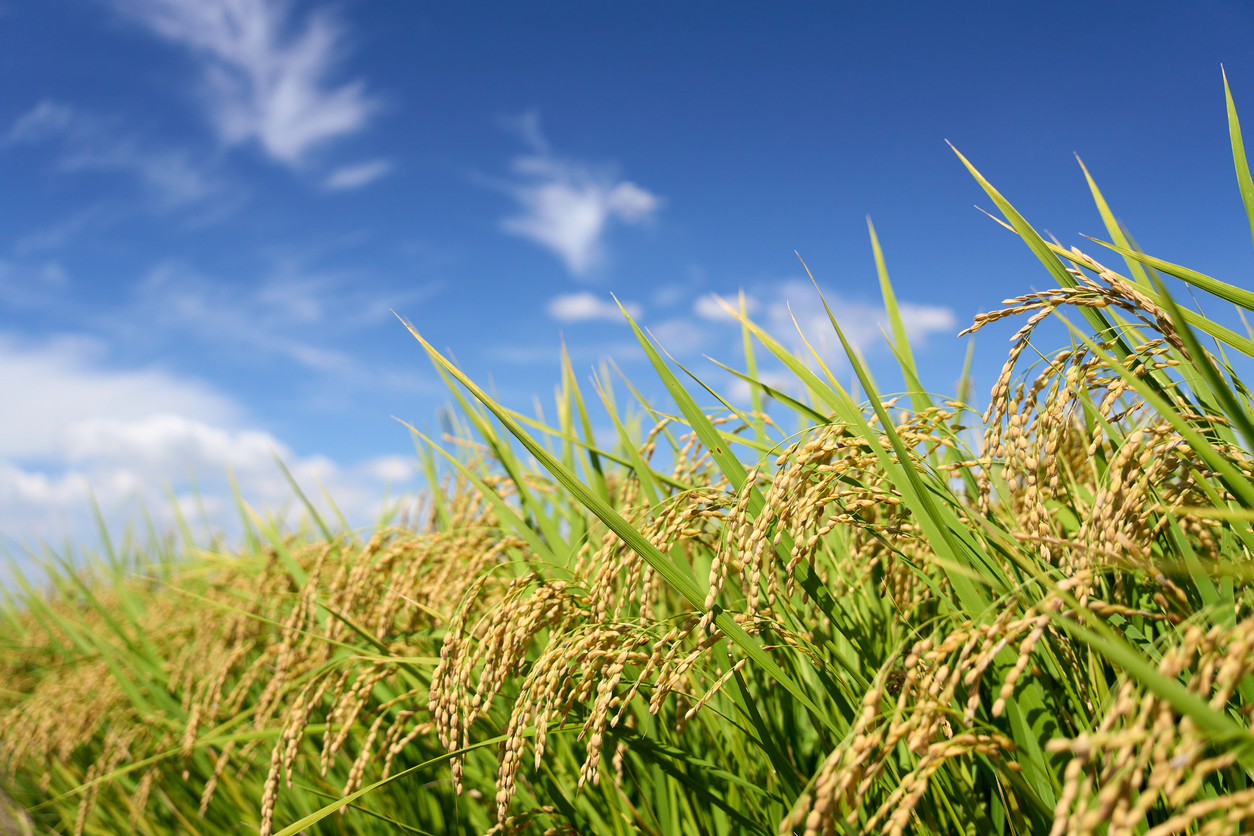
Scientists Show How to Grow More Nutritious Rice That Uses Less Fertilizer
October 29, 2025| |
A new study co-led by the University of Massachusetts Amherst has introduced a groundbreaking method for cultivating rice. Researchers found that applying nanoscale selenium to rice plants can dramatically cut the need for synthetic nitrogen fertilizer while maintaining or even increasing crop yields. This innovation addresses the "triple threat" of a growing population, climate change, and the high environmental cost of conventional farming, which typically sees up to 70% of fertilizer wasted and washed away.
The researchers found that the key to this success lies in how the rice plant interacts with the nano-selenium. Applied directly to the leaves and stems via aerial drone, the selenium suspension stimulates the plant's photosynthesis by over 40%. This surge in energy production drives carbohydrates down to the roots, leading to bigger, healthier root systems. These robust roots then release organic compounds that cultivate a community of beneficial microbes in the soil, which in turn work symbiotically to pull more nitrogen from the soil into the plant.
This increased efficiency, known as Nitrogen Use Efficiency (NUE), jumped from as low as 30% to over 48%. The result is a substantial reduction in environmental pollution, including a 41% decrease in negative environmental impacts and an 18.8–45.6% cut in the release of powerful greenhouse gases like nitrous oxide and ammonia. Furthermore, the final rice grain is more nutritious, with elevated levels of protein, essential amino acids, and selenium, offering a significant pathway toward more sustainable and healthier global food production.
For more details, read the article University of Massachusetts Amherst.
| |
You might also like:
- AI Uncovers Key to Sustaining Rice Yields for Billions Around the World
- Nitrogen Use Efficient Rice Shows Promising Field Performance
- OsbZIP1 Mutation Contributes to the Improvement of Rice Yield
Biotech Updates is a weekly newsletter of ISAAA, a not-for-profit organization. It is distributed for free to over 22,000 subscribers worldwide to inform them about the key developments in biosciences, especially in biotechnology. Your support will help us in our mission to feed the world with knowledge. You can help by donating as little as $10.
-
See more articles:
-
Plant
- High-Biomass Sorghum Hybrids Show Yield Gains with Nitrogen Management
- EFSA GMO Panel Releases Scientific Assessment of GM Soybean MON 94637
- Philippines’ 21st National Biotechnology Week Highlights the Use of Artificial Intelligence
- Pakistan Approves GM Sugarcane and GM Cotton for Commercialization and GM Canola for Food, Feed, and Processing
-
Animal
- Gene Drive Technologies: Advances in Health, Conservation, and Governance
- Experts Develop Gene-Edited Pigs Resistant to Classical Swine Fever
-
Food
- World Food Forum 2025 Exhibition Traces Evolution of Agrifood Systems
- Scientists Show How to Grow More Nutritious Rice That Uses Less Fertilizer
-
Read the latest: - Biotech Updates (December 17, 2025)
- Gene Editing Supplement (December 17, 2025)
- Gene Drive Supplement (February 22, 2023)
-
Subscribe to BU: - Share
- Tweet

